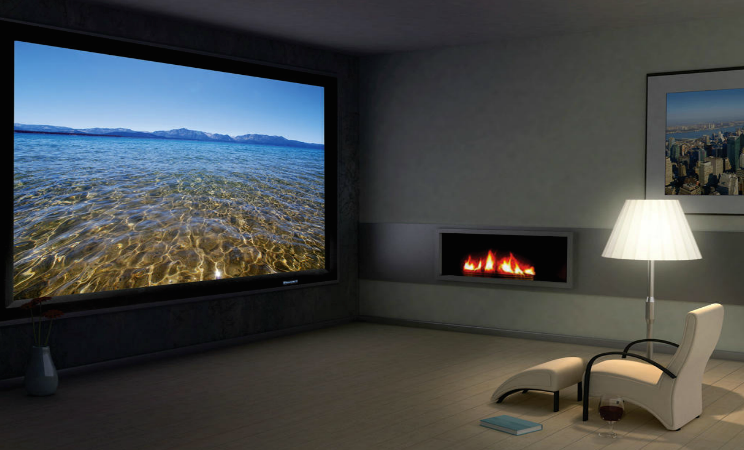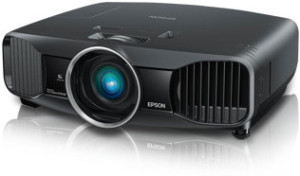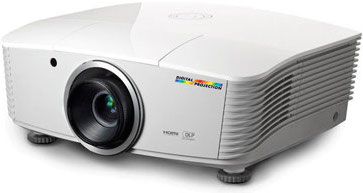
So you’ve decided that you wanted something even more dramatic than a 60-something inch screen. For a media room or dedicated home theatre, a projector setup can have a really big, beautiful picture that is fully engaging. Many features to look out for in projectors, such as size, inputs and Ultra HD are similar to direct view TVs. There are also specs that are particular to projectors, such as technology used, brightness, light source and noise. Let’s step through some of the things to keep in mind when researching your projector.
First lets talk about projector types. There are two major types of technologies used with projectors LCD and DLP. LCD projectors shine light through LCD (liquid-crystal display) screens to create the picture. DLP (Digital Light Processing) projectors have special mirror microchips that reflect light. More expensive projectors with LCD or DLP units for each primary colour of light have better picture quality. Although a good LCD may look better than a bad DLP, in general DLPs have better picture colour and contrast.
reflect light. More expensive projectors with LCD or DLP units for each primary colour of light have better picture quality. Although a good LCD may look better than a bad DLP, in general DLPs have better picture colour and contrast.
A big item to look out for in projectors is brightness. A brighter projector isn’t ‘better’ than a less bright one, but you need to determine what brightness level is required for your viewing room. Manufactures usually use lumens as the measurement for how bright a projector is, and as with any spec, there is variance in the way manufactures report their spec. In very general terms something around 1000 lumens will work in a perfectly dark room like a purpose built home theatre, approximately 2000 lumens for a room with some ambient light, and 4000+ for brighter rooms like a multi-use media room with ambient light. There is no right or wrong in terms of wanting a dedicated home theatre vs. a flexible media room, but choose your projector to match the room lighting conditions. Price doesn’t trump all – a $50K 1000 lumen projector will look  bad in a bright room as the picture will look washed out and have poor colour and contrast. Also keep in mind that you need more light as your screen gets bigger.
bad in a bright room as the picture will look washed out and have poor colour and contrast. Also keep in mind that you need more light as your screen gets bigger.
Light bulbs or LED lights are use to create the light in a projector (similar to a flashlight). Projector light bulbs are like regular light bulbs, but really, really bright. They are capable of creating lots of light, while LED are less bright. Any light bulb will eventually burn out (and dim faster with age than LEDs), so it will need to be replaced at some point. LED lights in a projector should last the life of a projector for casual home use. If you have a brighter room, you’ll likely need to use a light bulb based projector to get a picture bright enough to enjoy. Choose the solution to fit your environment.
Also be aware of projector noise. Lights and electronics create heat, so a projector must be cooled with a fan. A really bright projector will need a big, bright and hot bulb, so it will need more air flow to keep it cool. A LED lit projector will need less cooling, as LEDs create a lot less heat. Some projectors are better at controlling the noise with better fans and well designed cooling paths. In general, larger projectors have more space to manage fan and air noise. All projectors make some noise, but well designed ones will be tolerable in your room with only a quiet hum. If you want absolute silence, you can get fancy and enclose the projector in a bulkhead or different room with a window for the projected light. (Make sure to vent though!) Once you’ve narrowed your projector list, keep noise levels in mind.
As you can see, there are lots of things to keep in mind when looking for a projector. If you take your time, you can balance your needs and quality to your viewing environment at a price that works for you. Next time we’ll look at the important other half of the equation – the screen.
